To level up your camping game, you might want to consider setting up a screen tent – also known as a screen house or bug shelter.
But, what exactly is a screen tent? How can it be beneficial when you’re camping? And, which screen tent should you get?
Well, after having recently purchased our latest light-weight screen tent, I’ll let you know why they’re so beneficial for your campsite. Then, you can determine whether a screen tent is worth bringing along on your next camping adventure.
…psst, if you’re like me and hate mosquitoes, it definitely is!
Article Contents:
What is a Screen Tent?
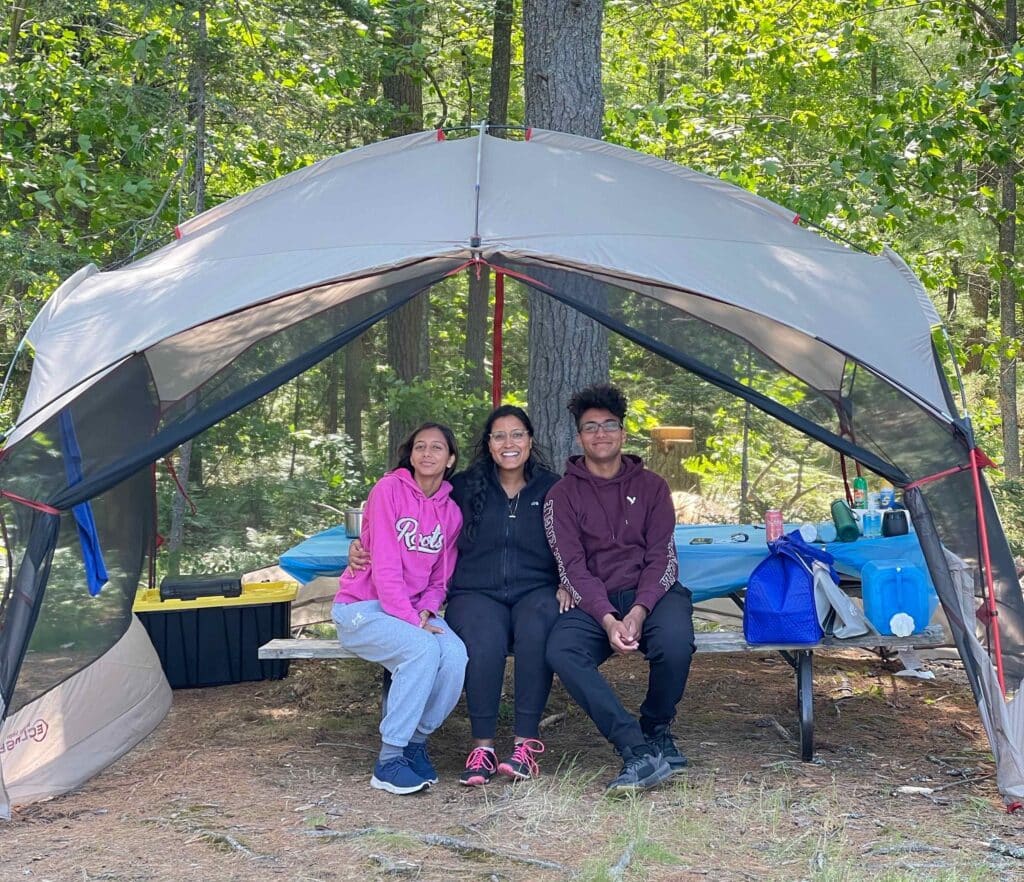
Most of us are familiar with the standard list of camping equipment essentials. However, once you have all the necessities taken care of, then it’s time to consider some additional “comfort” items.
A screen tent can be considered a comfort or luxury camping item because, while not crucial, it can enhance your overall experience outdoors.
Physically, a screen tent is a free-standing shelter that typically consists of a waterproof roof for rain and sun protection and mesh walls for insect protection. The structure is erected and held in place with poles similar to a tent, and it does not typically include a fabric floor.
Another way to think of it is that a screen tent is a glorified self-supported tarp. You don’t need to worry about trees for suspension because it includes its own poles.
Not to mention, a tarp is only a means to block the sun and deflect rain. A screen tent also helps to protect you from insects and critters.
4 Benefits of Screen Tents
A screen tent offers many direct and indirect benefits while camping. Here are the 4 most important benefits of a screen tent.
1. Respite from Sun and Rain

When you camp, you are typically at the mercy of mother nature. And more often than not, she’s temperamental and decides to throw you some curve balls, weather-wise.
Heck, that’s part of the reason we’re out there, isn’t it?
Nevertheless, for many campers, intense sun and torrential downpours can sour a perfectly fine camping trip. And, if you haven’t come prepared, it can be a recipe for disaster.
A screen tent offers excellent protection from both the harsh sun and sudden downpours.
- The roof fabric can absorb and block harmful UV light, preventing sun burns during the hot summer months.
- The waterproof roof fabric ensures campers and equipment underneath are kept dry during passing storms.
Staying cool in the summer and dry during cooler months is also very important from a safety perspective.
- Severe sunburns are a serious risk while camping, as well as heat exhaustion and heat stroke.
- Feeling chilled after getting rained on may lead to hypothermia if it’s windy or the temperature starts to dip down.
2. Extra Protection from Insects

Hungry black flies and mosquitos can be relentless during certain times of the year. They can make camping and spending time outdoors incredibly uncomfortable, even painful.
DEET and other forms of insect repellent do work to varying degrees. But, having a physical barrier between between you and these flying blood-suckers can be a lifesaver.
Personally, during peak insect times of the day, usually at dawn and dusk, I retreat to my tent to hide out until they’ve had their feed of others or it gets too cool for them.
With a screen tent, I can still spend time with everyone outside without constantly having to swat away buzzing flies and mosquitos.
Pro-tip: Check out both How to Stop Mosquito Bites and How to Treat Mosquito Bites for more helpful information.
3. Enclosed Cooking and Dining Area
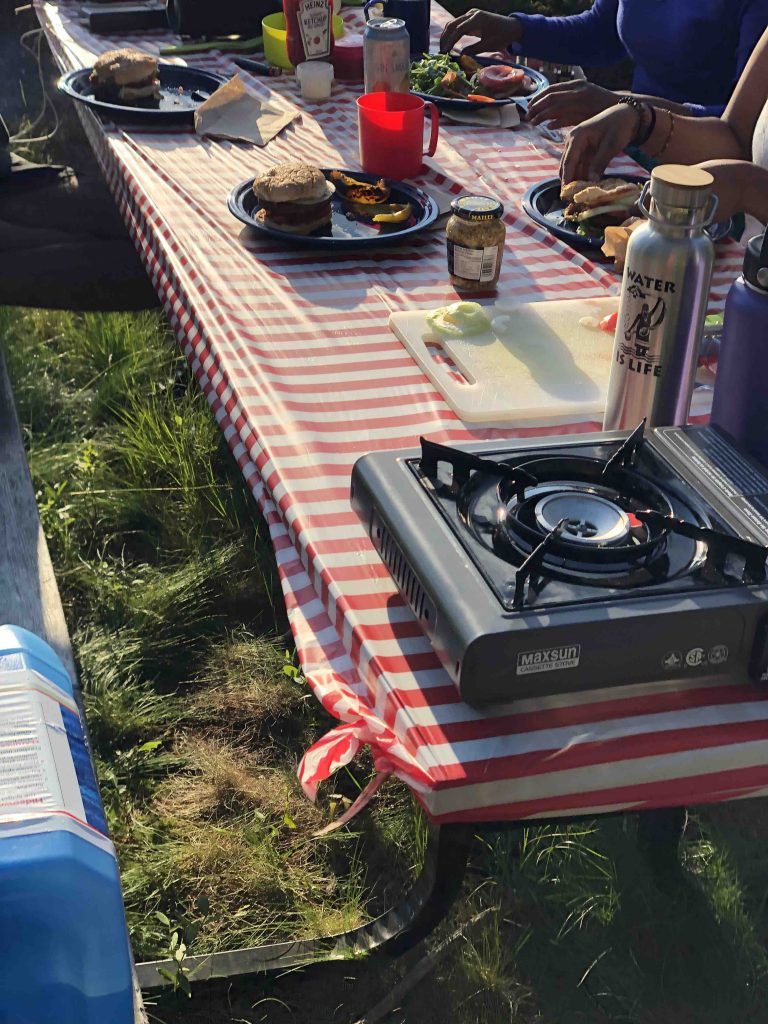
Have you ever paid close attention to mosquitos when you start cooking outdoors? Well, I began to notice a sudden change in their behaviour whenever I would start cooking with a butane camp stove.
- Mosquitos are naturally attracted to carbon dioxide from warm blooded mammals.
- The burning of butane generates heat and carbon dioxide, which acts like a beacon for mosquitos.
For this reason, setting up your cooking and dining area inside of a screen tent can ensure mosquitos are kept at bay. You can cook and enjoy your meals outdoor in peace!
Additionally, some screen tents, like our Eclipse Refuge 12’ x 10’ Screen House, come with a built-in wind wall. It comes in very handy when cooking on windy days.
- The wind-wall is a non-mesh fabric that can be hung up to stop and deflect wind gusts.
- This improves your cooking situation by increasing your camp stove’s heating efficiency.
Pro-tip: Set up your camp stove close to the wind-wall inside your screen tent. This helps to maximize wind-deflection, improves stove heat transfer and limits rapid cooling of food.
4. Dry Storage Area
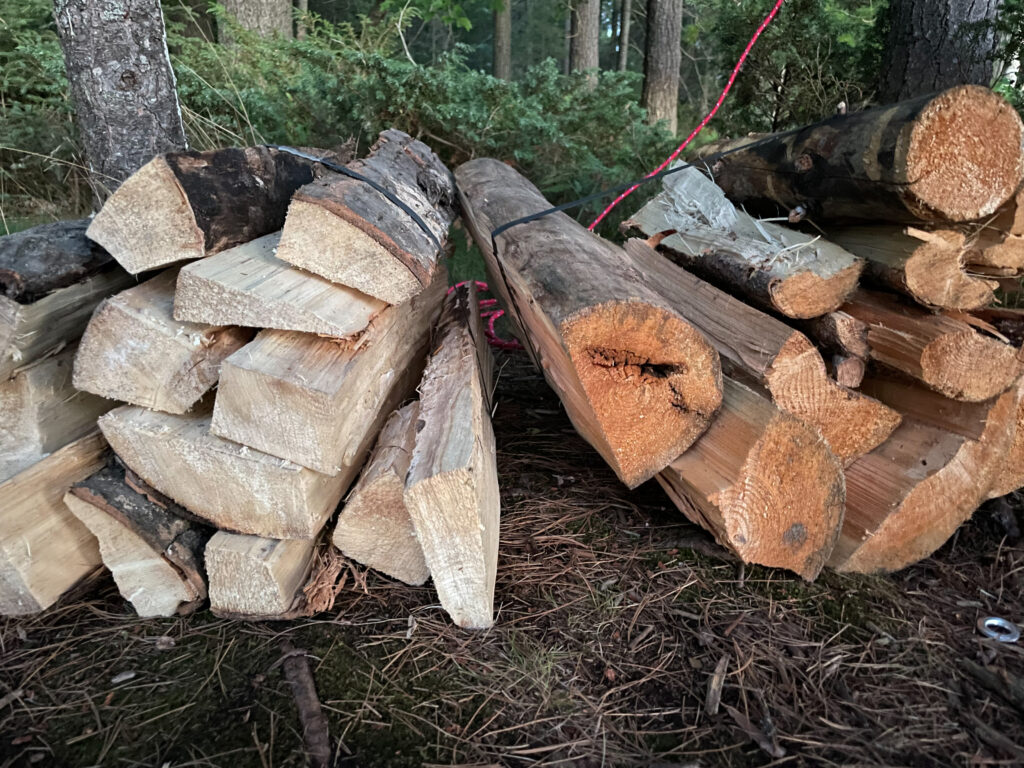
An important aspect of camping is keeping your equipment out of the rain and dry. Likewise, storing collected firewood in a dry area is a must to ensure you can start or maintain a fire, even during wet conditions.
More often than not, dry areas are a rarity at a campsite. Most of the time, you are relegated to tent vestibules, underneath picnic tables, below small tarps, or even inside food storage lockers if you’re lucky.
These spaces can be limited in capacity making a screen tent a great alternative.
- A screen tent is a large dry storage area for all of your extra gear.
- Camping chairs, cooking gear, backpacks, and firewood can be kept inside of and underneath a screen tent.
- Likewise, sensitive electronics, such as camera gear, phones, radios, or speakers, can be kept protected from the rain.
Best Screen Tent for Camping
Just like regular tents, there are countless screen tents on the market. But, which one is the best?
Well, the key factors driving the decision for my wife and I was overall size, weight, and waterproofness.
These three factors are important for us because we regularly backcountry canoe camp, so space is limited. We also don’t want to be lugging around something that weighs a tonne.
Furthermore, we wanted a screen tent that had a very good waterproof rating because southern Ontario gets hit with torrential downpours in the summer camping months. Our goal with a screen tent was to ensure everything underneath it would stay bone-dry.
Prior to, we would set up multiple tarps to cover the picnic table and a separate seating area. A good tarp set up takes anywhere between 25 to 45 minutes to deploy, with adjustments throughout the trip.
Eclipse Refuge Screen Tent
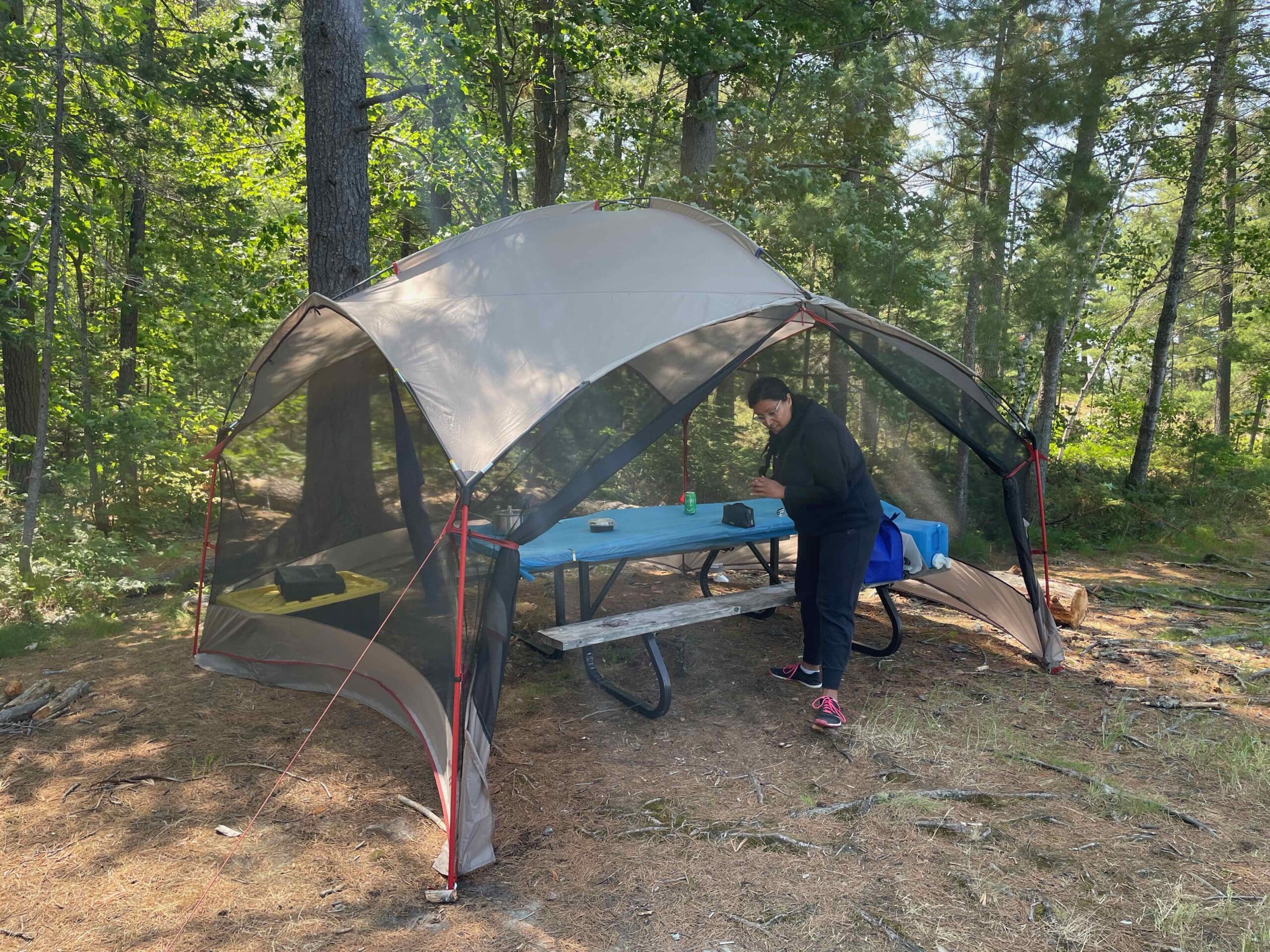
After countless hours of research and talking to other outdoor experts, we decided on the Eclipse Refuge Screen House by Bass Pro Shops.
Here’s all the reasons why we love it:
- It’s 16.75 pounds, which sounds heavy at first, but in reality, is way lighter compared to other screen tents of similar size.
- It’s 12’ x 10’ x 88” so it can fit a standard picnic table inside with plenty of room to spare.
- The amount of headspace for me (I’m 5’ 10”) even at the edge of the screen tent is plenty – It doesn’t taper down like some canopies of its size.
- It’s a very large footprint for its price and weight.
- The area covered by the roof is nearly the same as the floor footprint, so it provides maximum rain coverage.
- The canopy waterproof rating is very high (800 mm).
- Unlike many other screen tents, the Eclipse comes with a removable wind-wall.
- The poles are colour-coded for easy and quick set-up; it takes about 10 minutes to set up with a partner!
Pro-tip: There is a larger 15′ x 17′ variant of the Eclipse screen tent, but it was too large for our needs. Nevertheless, it’s a great size for car camping or family camping!
Screen Tent FAQ
Do You Really Need a Screen Tent for Camping?
Practically speaking, a screen tent is not necessary for most camping trips. It is very much considered a comfort or luxury item that improves your time outdoors.
At the same time, there are many benefits of a having a screen tent (e.g., protection from sun, rain, and bugs), which might make your camping trip more enjoyable.
- If you’re an avid camper and looking to enhance your camping experiences, then maybe consider getting a screen tent.
- Not to mention, if you’re camping with younger kids or a large family, a screen tent makes for a great “home base”.
How Heavy is a Screen Tent?
Screen tents weigh between 10 to 20 pounds depending on the overall assembled size and build quality. The larger weight in comparison to a traditional tent is primarily associated with longer and thicker poles to suspend the bigger structure.
Some manufacturers cut down on weight by using lighter aluminum poles, instead of heavier steel and glass fibre poles. This adds to the cost, so its usually overlooked.
How Large is a Screen Tent?
Camping screen tent footprints can be as small as 8’ x 8’, like the Coleman Skyshade, or as large as 15’ x 17’, like the Bass Pro Eclipse.
I recommend getting a screen tent that is at least 10’ x 10’. This ensures you have plenty of good overhead coverage, as well as extra space to move freely inside if it’s set up over a picnic table.
Pro-tip: A standard picnic table is roughly 8’ x 4’, so if you plan on setting up the screen tent around it, make sure you have plenty of clearance to walk around.
Can You Sleep in a Screen Tent?
Yes, you can sleep in a screen tent. The mesh walls and waterproof roof provide protection from mosquitos and rain.
Unlike a tent, a screen tent does not contain a fabric floor. So, any rain that falls outside can flow into the screen tent. Ground insects and small rodents can also make their way inside.
Furthermore, if it’s windy and cold outside, a screen tent does not provide any protection or insulation.
Can You Cook Inside of a Screen Tent?
One advantage of using a screen tent while camping is the ability to cook inside of it. The roof provides protection from the sun and rain making cooking easier.
Unlike cooking inside of an enclosed tent, which should always be avoided, screen tent mesh walls allow for camp stove combustion gases to blow away, which eliminates the risk of asphyxiation.
Pro-tip: Check out 4 Reasons Why You Should Not Cook Inside of a Tent for more information.
Can you Build a Fire Inside of a Screen Tent?
Yes, you can certainly build a fire inside of a screen tent because they are typically designed with no floor. Be that as it may, the heat and sparks from a large fire can cause damage to the screen tent fabric. More importantly, the smoke and gases from a fire will linger for longer inside of a screen tent, which can pose a health risk.
Similar to starting a fire under a tarp, a well-contained fire inside of a screen tent should never be left unattended and should always remain small. Therefore, if there is a slight breeze, and the fire is kept small, the risk of equipment damage or personal injury will be very low.
Also, it’s always a good idea to ensure that you select the right firewood for your campfire. Some firewood is prone to “popping” and generating lots of flying embers. These hot embers can waft their way onto the screen tent walls and damage or burn holes in the fabric.
Personally, I would only start or maintain a fire inside of a screen tent as a last resort or during an emergency situation.
How to Secure a Screen Tent from Blowing Away?
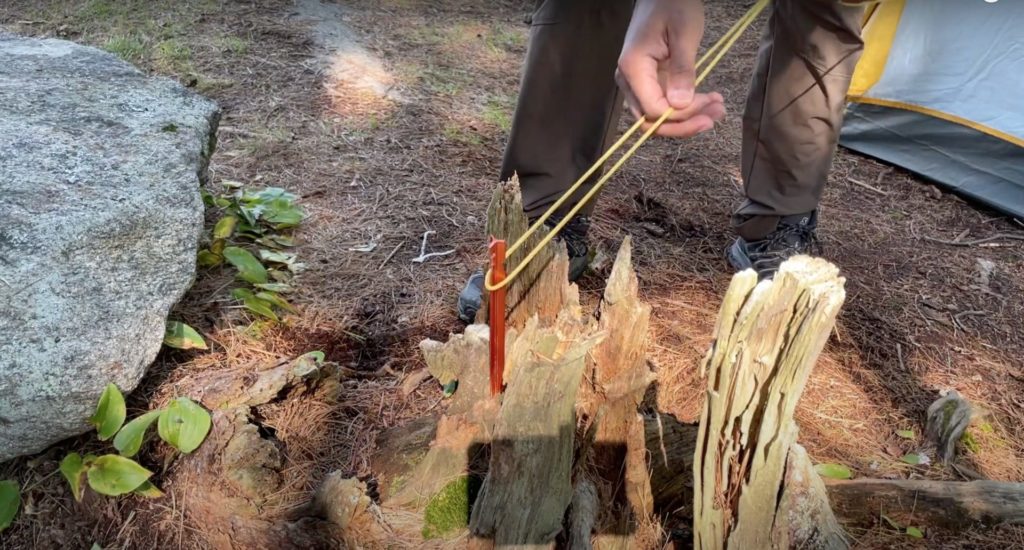
Just like a tarp, a screen tent can act as a sail and get blown away by a strong gust of wind. Thankfully, anchor points are built into all screen tents.
- Use the included ground stakes at all corners of the screen tent base to firmly anchor the pole ends into the ground.
- Make sure to angle them into the ground, so that they don’t pull out easily.
In addition, stake out any guy lines to increase the rigidity of the screen tent. You can use small boulders, roots, tree trunks, and even picnic tables as anchors to help secure your screen tent to the ground.
Pro-tip: To reduce the impact of wind pressure on your screen tent, roll up the mesh doors. Even though it’s mesh, it still catches the wind. Thus, reducing the fabric surface area perpendicular to the wind direction reduces the overall impact!
This article contains affiliate links, which help support this blog at no cost to you!
